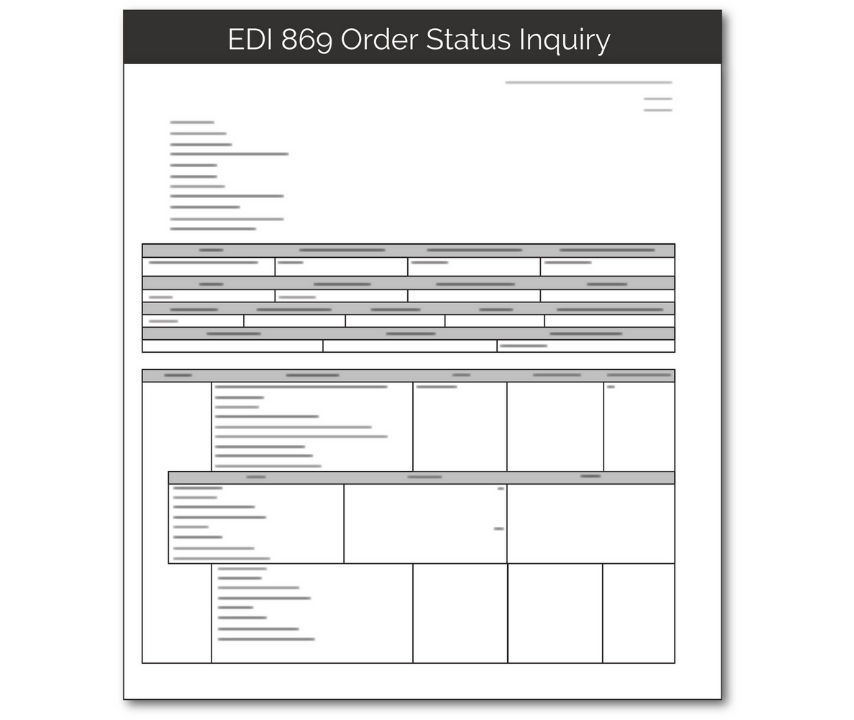EDI 869
Order Status Inquiry

What is an EDI 869?
EDI 869, also known as an Order Status Inquiry, is used by customers to request an update on all or part of an existing order. This EDI transaction can be sent at any time during the order or shipping process and generally requires a seller response using EDI 870 Order Status Report.
EDI 869 documents follow the x12 format set by the American National Standards Institute (ANSI), a not-for-profit organization that regulates EDI formats in the U.S.
What are the Essential Components of EDI 869?
EDI 869 Inquiries must include key information about an order, along with specific information requests in for all or part of the order. Key information found on the EDI 869 document include:
- Purchase order number
- Vendor number
- Buyer contact information
- Product quantities, prices, and descriptions
- Indication of specific questions regarding products ordered, shipment details or any other part of the purchase

How do I Use EDI 869?
EDI 869 is a great way for buyers to check on the status of their purchase. Whether they want to know where their order is right now, when its expected delivery is, or get updated information on specific line items, this EDI transaction set can help.
Buyers can send EDI 869 to their trading partners any time they’d like an update, whether the order has been shipped yet, or not. Most sellers will respond to EDI 869 with an EDI 997 Functional Acknowledgement to confirm receipt of the document. They will also normally reply with an EDI 870 Order Status Report, which answers the requests in the Inquiry document.
What are the Benefits of EDI 869?
Automating Order Status Inquiries using EDI 869 has multiple benefits. First, it enables buyers to “check in” with their orders, without waiting for a ship notice, manifest, or other supplier-side documents. Second, because it’s automated, this EDI document replaces the need for time-consuming phone calls or back-and-forth emails. EDI 869 pulls data directly from other documents like the EDI 850 Purchase Order, which also saves time, and prevents errors from manual data entry.

